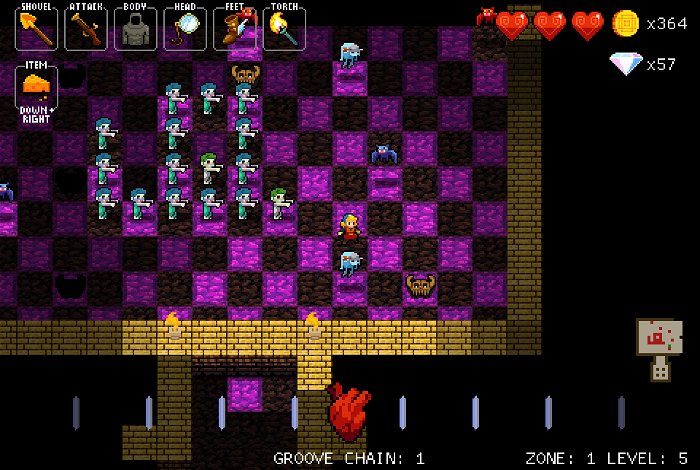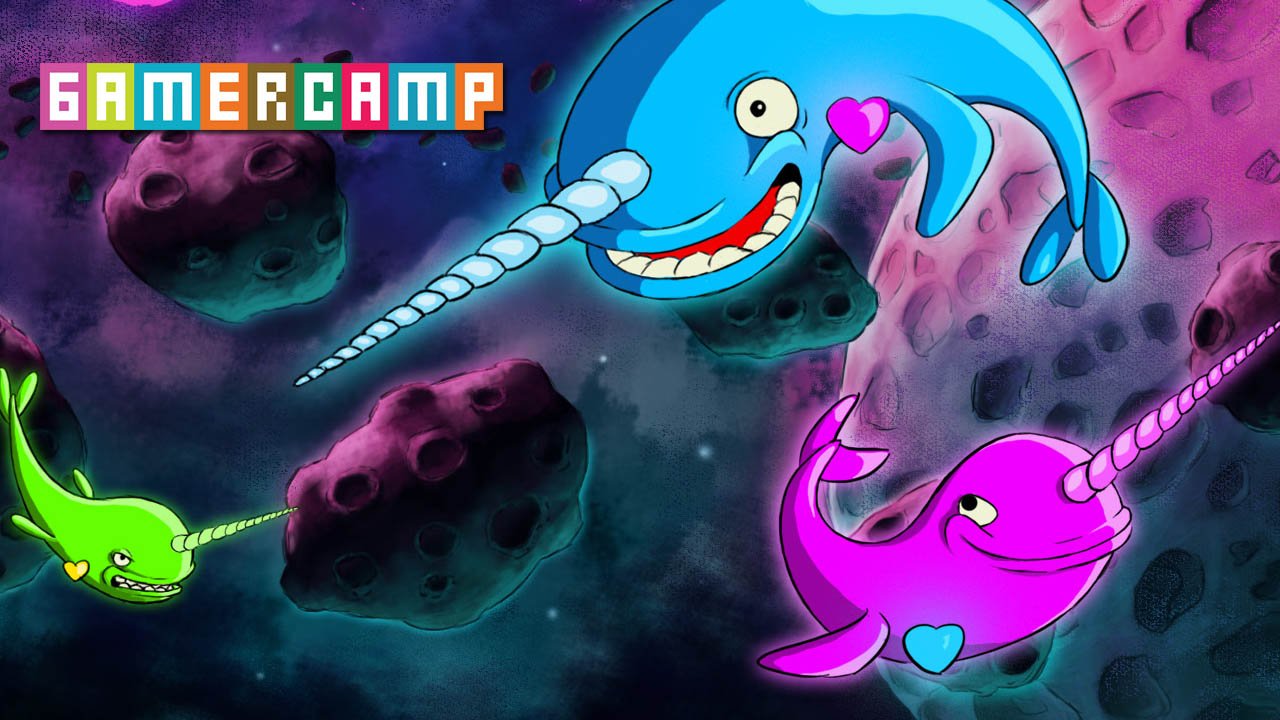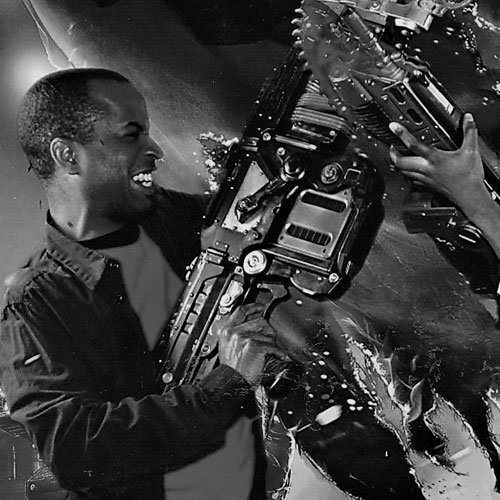I have a surprising confession to make as a so-called “core gamer”. After spending a full day at Gamercamp 2013, my brain hurt a little.
Not like a migraine headache. More like the kind of numb, tingling, brain-freeze sensation that one gets from sucking down half of a Slurpee in five seconds; the kind of brain hurt that’s followed by giddy laughter and affirmation that at least some part of you is still young and alive. How better to describe a gaming event that celebrates and preserves the essence of what games are, yet in the same breath challenges our collective notion of what games, (videogames in particular) should be, and more often than not even turns that notion completely on its head?
Take Crypt of the Necrodancer, the aptly-named, Frankenstein’s monster of a game whose pounding techno tracks welcomed me to the Hotel Ocho venue long before I ascended to Gamercamp Arcade’s first floor (the game could have easily been mistaken for the event’s DJ). An unholy cross-pollination of early 8-bit, top-down RPGs, rhythm-action games and modern roguelike sensibilities, Necrodancer demands that players navigate and fight their way through creature-infested dungeons using only a Dance Dance Revolution pad as their control input. All player actions, including attacks, spells, item use and of course, movement, are all controlled by stepping on one or more of the pad’s 8 directional sensors. And naturally, as Necrodancer is also about dancing, players must move on the beat, otherwise nothing occurs. Just like the literal representation of a still-beating heart that pulsates at the bottom of the screen, the bass-heavy, chip-tune inspired soundtrack drives the tempo of the game, and the songs themselves also serve as time limits that funnel the player towards impromptu boss fights once they wind down, putting pressure on players to explore quickly and gather enough items, loot and power-ups to prepare themselves for battle. Using the DDR pad requires a certain amount of brain-rewiring, much like the experience of learning how to play first-person shooters with analog sticks for the first time, but it quickly becomes second nature. Most players who end up purchasing this game when it comes to PC and Mac via Steam will likely play it with a gamepad or keyboard, but Necrodancer is infinitely more fun with the awkwardness of the DDR pad thrown in.

The new neural pathways in my brain created by Necrodancer were still forming as I moved on to a trio of indie games also in development with competitive multiplayer at the heart of their focus, Huskerball, Toto Temple and Starwhal: Just the Tip. Huskerball for example sees players piloting spaceships in anti-gravity, battling for possession of a chameleon-like orb which only grants points to a player when scored in that player’s net and is of the same player colour. Since the automatically ball changes colour to that of the player who last touched it, the action around the ball and each player’s net is hectic to say the least. This is further intensified by the zero gravity mechanic, as players can only move freely with speed and momentum as long as they are in contact with the ball or another surface, and must push off of those surfaces, objects or each other to travel into the weightless areas. Needless to say, the act of scoring by having to push away from the ball at the right angle, while preventing others from touching it on the way to your net is an experience that is likely to build and destroy friendships at the same time. Similarly, Toto Temple has two-to-four players fighting for control over an object, but replaces Huskerball’s anti-grav arena with a maze of platforms, swaps the spaceships out for a quartet of deities with slab-like heads resembling that of Mayan statuettes, and the ball becomes a large, braying goat. While these deities are bound by the law of gravity, they are nonetheless able to bend it by double-jumping and boosting about the stage Superman-style, with the goal being to collide with their opponents and knock the goat off their heads, automatically taking the goat as their own. The goat awards one point per second to a deity as long as it remains in in that deity’s possession, so every game is a mad dash to acquire the goat and keep it out of the other players’ hands for as long as possible. Finally, Starwhal: Just the Tip brings back the anti-gravity arena but tosses out the “ball” altogether in favour of good old-fashioned bloodlust, pitting players against one another as unlikely homicidal narwhals from the future. Each “Starwhal” has an exposed heart on its underbelly that can only withstand three hits before it shatters, so players must flip, flop and thrash about as they struggle to skewer each other in a duel to become the Last Aquatic Mammal Swimming. In a very cool twist, the game automatically slows down time whenever a Starwhal’s tusk narrowly misses or scores a hit, adding a tense element of the unknown to each and every clash. And when a Starwhal dies, it tragically collapses like shattered glass into a pile of whale chunks.

What took me most aback by the above games other than my desire to play them over and over again was how dedicated and successful they all were in delivering an exclusively local-multiplayer experience. It was simultaneously refreshing and appalling for me to realize it had been ages since I had enjoyed games with such simple mechanics so thoroughly, and actual decades since I had played a multiplayer game that had no online or single-player mode by design, probably not since Combat for the Atari 2600. According to Gamercamp’s Executive Director and Co-Founder, Jaime Woo, it’s experiences like this one, a literal and/or spiritual return to gaming basics, that serve as the Toronto-based festival’s greatest strengths, and is the reason why people of all ages and gaming experience (including none at all) should feel welcome.
“I really want that when people hear about Gamercamp to not feel that they have to have permission or a certain amount of hours played with video games in order to attend.” Woo emphasizes. “I think that’s a really detrimental thing that we’ve cultivated in game culture…that if you don’t play enough games or enough hours of games then you’re not a ‘real gamer’ so you can’t go to ‘real gamer’ events. I think that’s stupid. People go to TIFF because they either love film already or they’re going to learn to love film. People go to Luminato or Nuit Blanche to [explore] new things. Gamers need to have events where everyone can attend.”
That’s not to say that this year’s Gamercamp lacked for exhibits aimed at the core gamer. Capybara Games’ upcoming Super Time Force, an old-school, Contra-style shooter wrapped in an addictive time-and-mind-bending platformer, had its own corner on the main floor, beckoning experienced gamers with its high degree of challenge, its wacky, pixelated,” bullet-hell” world and its zany cast of heroes ranging from a fat, Caucasian kung-fu swordsman to a mohawked, skateboard-riding lizard that fires rebounding bullets. Slated as an Xbox Live Arcade exclusive for Microsoft’s Xbox 360, the game not only represents a level of commercial mindshare that many of the other exhibitors at Gamercamp are ultimately aspiring to with their works, but also serves as one of the positive outcomes of Microsoft’s recent efforts to repair its damaged credibility within the indie developer community. Likewise, Sony, both a Gamercamp sponsor and exhibitor at the event, dedicated nearly an entire floor of Hotel Ocho to showcase its soon-to-be-released PlayStation 4 game console and many of the indie games in its launch lineup. While the opportunity to try out PS4 demo units as well as the console’s much-praised Dualshock 4 controller was easily one of the festival’s biggest draws for attendees, the “new hotness” factor quickly fell-away in favor of the fun and intriguing gameplay of the PS4 indies on display, most notably the delightful shadow puzzles of Contrast, the 4-player puzzle-solving co-op of Tiny Brains, and the intentionally awkward premise and controls of Octodad: Dadliest Catch. Octodad: DC is a truly odd game that evokes so much laughter from the player’s struggles to navigate it and empathy for its hapless cephalopod protagonist as he pretends to be human that players will find themselves questioning exactly what emotion lies behind the tears rolling down their faces. With Sony continuing to ride a positive wave of indie momentum right into their next console launch, the PS4’s presence at Gamercamp 2013 was a natural fit.

PS4 was not the only next-gen hardware at the event however, as attendees also had the opportunity to try out the Oculus Rift for the first time, powering a virtual reality game called Stringer. Developed in only five months by George Brown College students, Stringer rides the fine line between a game and training simulator, as it has players take on the role of a war journalist stationed at an actual Canadian base in Afghanistan. During the 15-minute simulation, players must use a virtual camcorder to record medical procedures being performed on site and then put them into practice shortly afterward when a tank the player is riding in is attacked, injuring several soldiers who were riding with him or her. Sadly, my experience with the game was a bit blurry when moving and the game felt highly unnatural to control (largely due to my unfamiliarity with the two-handed Razer Hydra Controller and the inability to see the buttons with the goggles on). Nevertheless, the concept still holds an immeasurable amount of appeal, as the idea of using immersive tools such as Oculus Rift to relive actual events, even at this rudimentary level, is a sci-fi holodeck experience ripped right out of Star Trek. PS4 and Oculus need to get together and make a baby.
But while the next-generation of consoles and VR continue to elude us (for at least another week in the case of the former), the next generation of indie games could be found at Gamercamp 2013 in abundance. A Fishing Game with Actual Water takes the concept of Guitar Hero several steps further, using plastic bowls of water as game inputs (and is the first video game I’ve encountered where a plastic tablecloth, rainwear and a transparent cover for your HDTV is strongly recommended). First-person adventure The Stanley Parable is the perfect videogame epitome of the choose-your-own-adventure novel, with seemingly countless endings and a wry narrator that not only questions your choices but also the very constructs on which games are built and by extension, mankind’s pursuit of happiness. Monty Python and Hitchhiker’s Guide to the Galaxy fans apply here. SoundSelf invites players to lie on a bed and sing slow loud chants into a microphone, and when so inclined sings back in eerie tones and hums (represented visually by a projection of complex shapes and patterns projected on a wall), facilitating a euphonious dialogue akin to the scene in Close Encounters of the Third Kind when humanity makes first contact alien life–just a whole lot slower. Lovers in a Dangerous Spacetime distills the excitement of Star Wars space battles, the tense, strategic starship management of FTL and the visual aesthetic of The Powerpuff Girls into a cooperative two-player space shooter that sees players frantically running about a starship (displayed in cross-section like a futuristic ant farm) in order to manage its boosters, turrets, laser beams and other systems as they fend off attackers, fight giant, screen filling boss-creatures and protect the furry inhabitants of nearby planets. The level of cooperation required to prevail will test the limits of a couple’s romance–or “bromance”. Finally, first-person comedy-adventure Jazzpunk takes humor and satire in games to a whole new level, intentionally mixing point-and-click puzzle/adventure mores with the sophisticated absurdity of the Airplane and Naked Gun films. Writing good comedy is difficult and making a funny game many times more so, but Jazzpunk’s timing, dialogue and hilarious interactions make it look effortless.

With five successful years of Gamercamp now under his belt, Woo is assured that the current popularity of indie games is not merely a passing trend. “We’ve been playing games for thousands of years,” Woo is quick to point out. “…the original computer games were all indie games. They were out in the seventies and people were all playing ‘indie’ games back then…I don’t think that original ideas that are compelling will ever go out of style”. He suggests that like the independent film surge of the 90s spearheaded by directors such as Quentin Tarantino and Rodrigo Rodriguez, indie gaming will likely stabilize in popularity, but won’t be going away by any standard. And with the quality and diversity of indie games on display this year, it would be difficult to disagree with him. Here’s to another ten.




